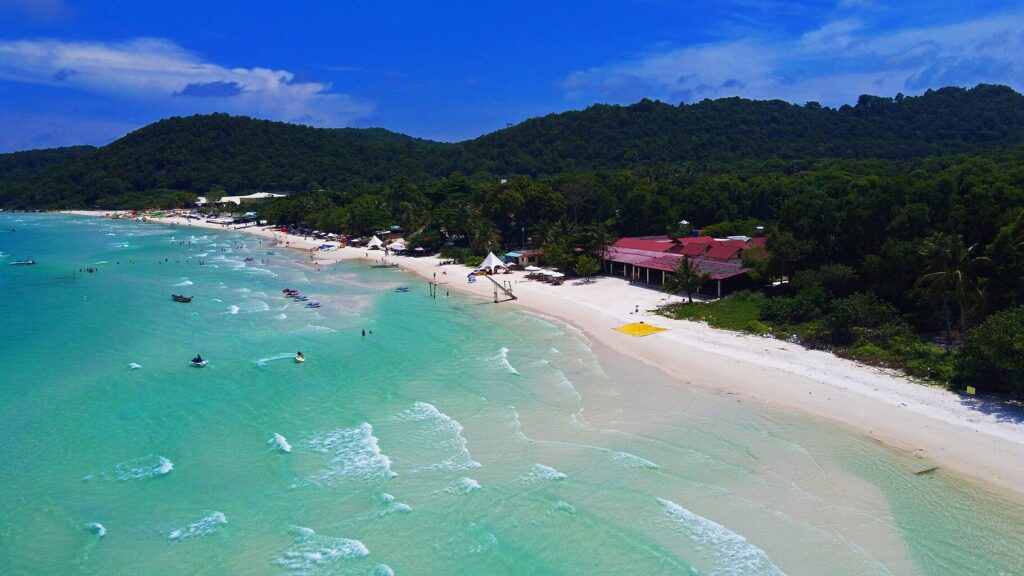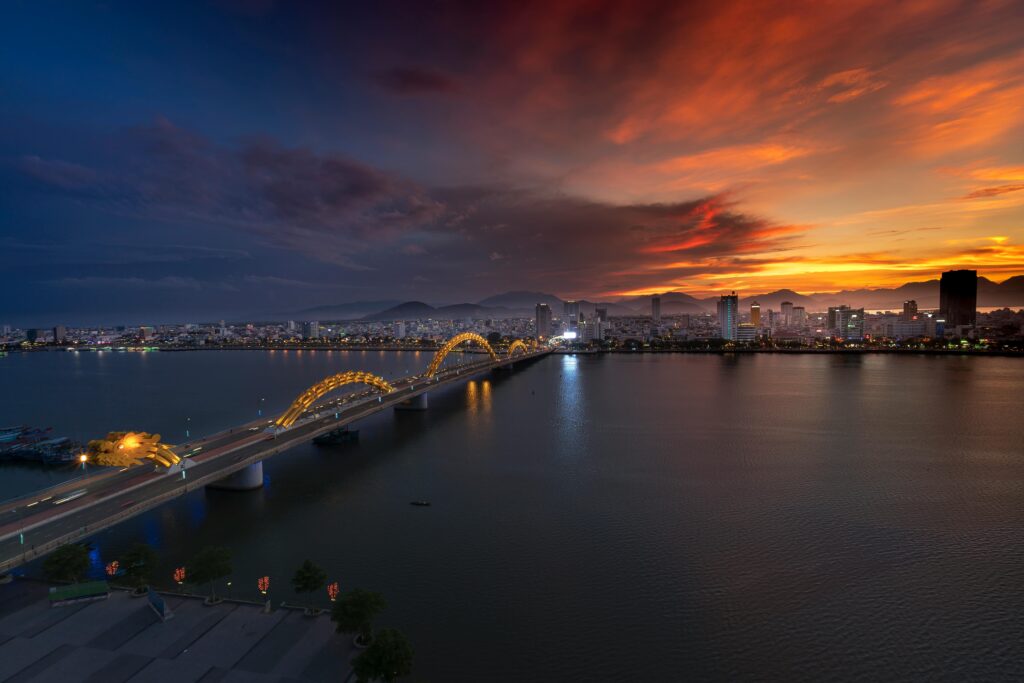When Is the Best Time to Visit Phú Quốc? Season-by-Season Guide for Beach Lovers
Picture this: you’re lounging on powdery white sand, crystal-clear water lapping at your feet, and palm trees swaying gently in the warm breeze. Welcome to Phú Quốc, Vietnam’s largest island and one of Southeast Asia’s most stunning beach destinations. This tropical paradise offers everything from pristine beaches and vibrant coral reefs to lush rainforests and charming fishing villages. Whether you’re craving adventure, relaxation, or a bit of both, Phú Quốc delivers. But here’s the question every traveler asks: when is the best time to visit Phú Quốc? In this guide, I’ll walk you through everything you need to know about Phú Quốc weather, the differences between the dry season and rainy season, and how to choose the perfect time based on your travel style. Let’s get started! Quick Snapshot — Best Time at a Glance Not sure which season suits you? Here’s a quick breakdown: Season Months Weather Best For Crowds Price Range Sea Conditions Dry Season Nov–Apr ☀️ Sunny, 25-30°C, Low humidity Beach lovers, water sports, island-hopping High $$ Calm & clear Peak Dry Season Dec–Feb ☀️ Perfect sunshine, 26-28°C Guaranteed beach weather Very High $$ Excellent Shoulder Season Apr, May, Oct 🌤️ Mostly sunny, occasional rain, 27-32°C Balance of weather & value, photographers Moderate $ Good to calm Rainy Season Jun–Sep 🌧️ Afternoon showers, 25-31°C, High humidity Budget travel, lush scenery, local culture Low $ Rough, limited visibility Quick Tips by Season: Dry Season (November–April) Shoulder Months (April, May & October) Rainy Season (June–September) Pro Tip: For the best of both worlds, budget-savvy travelers should target late April or October. You’ll enjoy pleasant weather without the peak-season price tags! Understanding Phú Quốc’s Climate & Seasons Phú Quốc has a tropical monsoon climate, which means it’s warm year-round with two distinct seasons. The island sits in the Gulf of Thailand, giving it slightly different weather patterns than mainland Vietnam. Here’s what you need to know about the Phú Quốc climate: These seasons directly impact your experience on the island: Understanding these patterns helps you plan the perfect Phú Quốc beach travel experience. Dry Season (November–April) – Peak Time for Sun & Sea If you’re dreaming of perfect beach weather, the dry season is your golden ticket. From November through April, Phú Quốc transforms into a sun-soaked paradise with some of the most stunning conditions you’ll find anywhere in Southeast Asia. Weather Conditions During these months, you can expect: The water is incredibly clear, making it ideal for Phú Quốc snorkeling and diving adventures. You’ll spot colorful fish, coral gardens, and maybe even sea turtles! Activity-Focused Tips This is the peak season for good reason. Here’s what you can enjoy: Unique Tip: Even during peak season, you can beat the crowds by visiting beaches or popular attractions before 9 AM. You’ll have the sand practically to yourself and capture those Instagram-worthy shots without photobombers! Booking & Budget Here’s the reality: Phú Quốc’s dry season means higher prices. Flights and hotels charge premium rates, especially during major holidays like New Year’s and Tết (Vietnamese Lunar New Year, usually late January or early February). Smart booking strategies: Yes, you’ll pay more during this season, but the guaranteed sunshine and perfect conditions often make it worth every penny. Transition Months (April, May & October) – The Sweet Spot Want to know a secret? The shoulder months are often the smartest choice for savvy travelers. April, May, and October offer a magical balance of decent weather, lighter crowds, and friendlier prices. Define the Appeal These transitional months sit between the dry and rainy seasons, giving you a taste of both worlds. The weather is still mostly pleasant, but you’ll avoid the peak-season chaos and costs. Pros vs. Cons Pros: Cons: Unique Tip The shoulder season is a photographer’s dream! The landscapes are incredibly lush and green (especially October), and the softer, more diffused light creates stunning images. If you’re seeking tranquility and don’t mind occasionally adjusting your plans, these months are perfect. Planning Advice For shoulder season travel: April is particularly lovely as the dry season transitions out—you’ll still get plenty of sunshine with occasional refreshing breezes. Rainy Season (May–October) – Hidden Benefits & Lush Landscapes Don’t write off the rainy season just yet! While May through October brings more precipitation to Phú Quốc, it also offers unique advantages that many travelers overlook. What to Expect First, let’s bust a myth: the Phú Quốc rainy season doesn’t mean constant downpours. Here’s what actually happens: Travel Implications & Opportunities Yes, some boat tours might get canceled due to rough seas. But here’s what you gain: Alternative Activities: Unique Tip Here’s the hidden magic: the rainy season transforms Phú Quốc into an incredibly green and vibrant paradise. The island bursts with life, waterfalls flow stronger, and you’ll have beaches virtually to yourself. It’s also harvest season for Phú Quốc’s famous black pepper, giving you a chance to see authentic agricultural life. With far fewer tourists, you’ll experience a more genuine side of island life—chatting with locals at markets, enjoying restaurants without reservations, and discovering hidden spots the crowds never see. Preparation Advice Pack smart for the rainy season: Most importantly, embrace flexibility. If rain cancels your beach plans, you’ll discover that Phú Quốc has plenty to offer beyond the sand. What’s the Best Time for You? A Traveler-Type Guide Still not sure when to book your Phú Quốc adventure? Let’s match your travel style with the perfect season. For Beach Lovers & Sun-Worshippers Best months: November–April (dry season) If your dream vacation involves endless sunshine, swimming in crystal-clear water, and working on your tan, the dry season is non-negotiable. You’ll get reliable weather, calm seas perfect for snorkeling, and ideal conditions for beach-hopping. Yes, you’ll share the sand with other tourists, but the guaranteed sunshine makes it worthwhile. For Budget Travelers & Solitude Seekers Best months: May–October (rainy season) or late April/early October (shoulder months) Save serious money while enjoying a more peaceful Phú Quốc experience. Accommodation costs drop significantly, and you’ll have attractions mostly
When Is the Best Time to Visit Phú Quốc? Season-by-Season Guide for Beach Lovers Read More »


